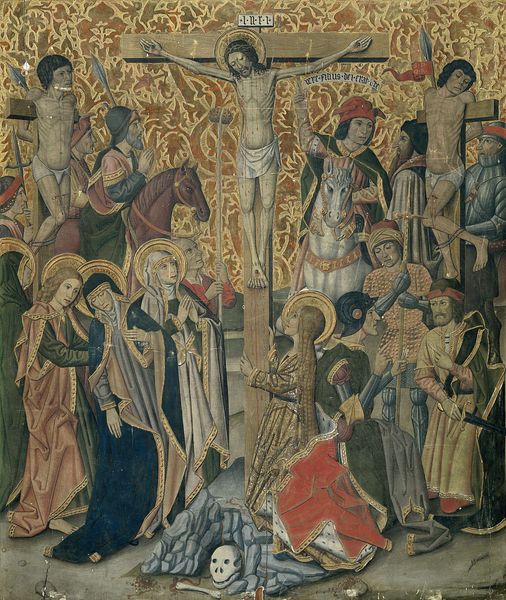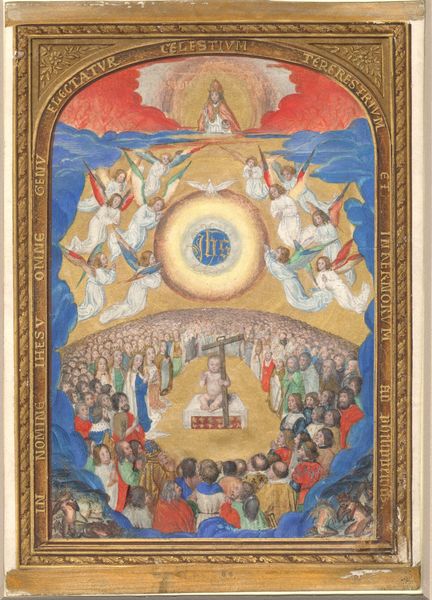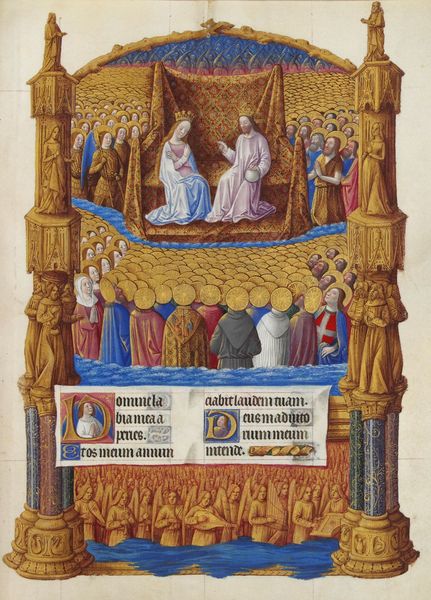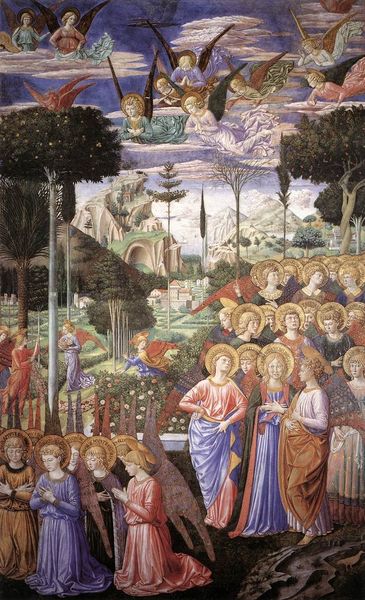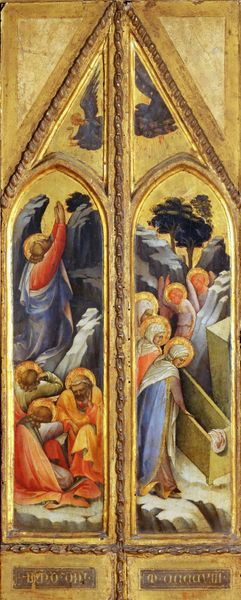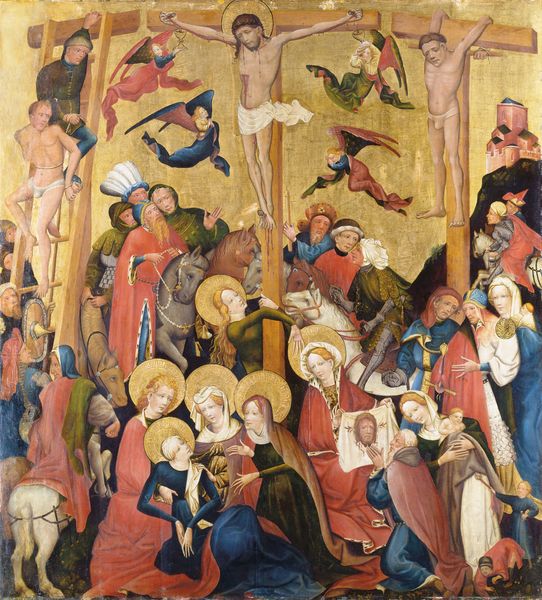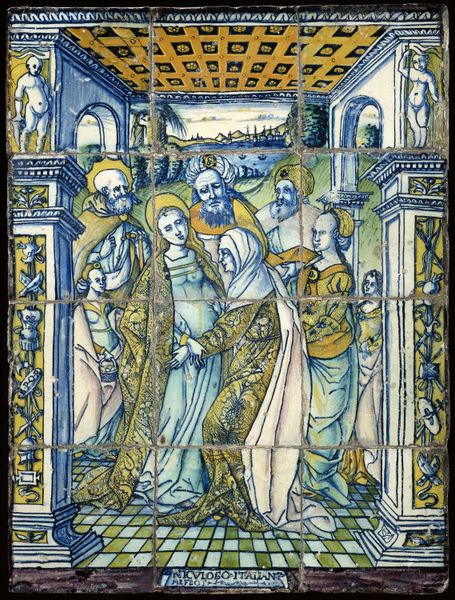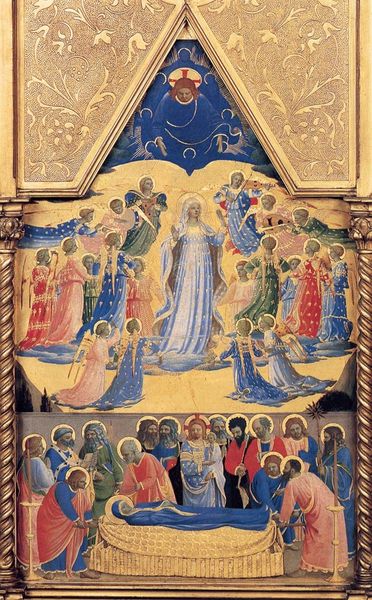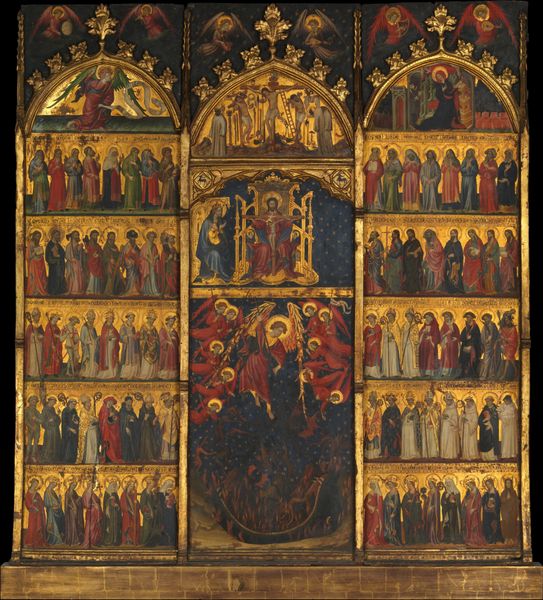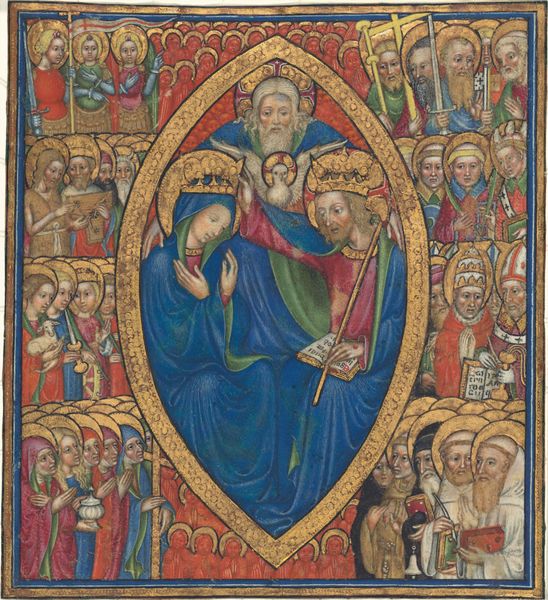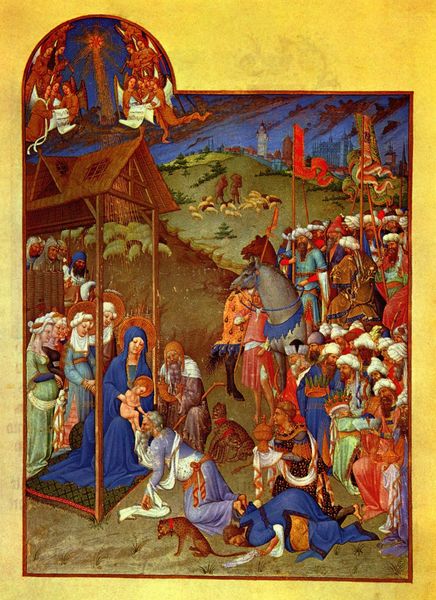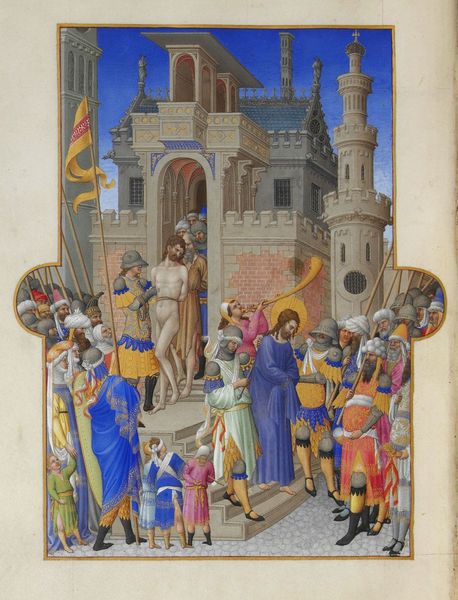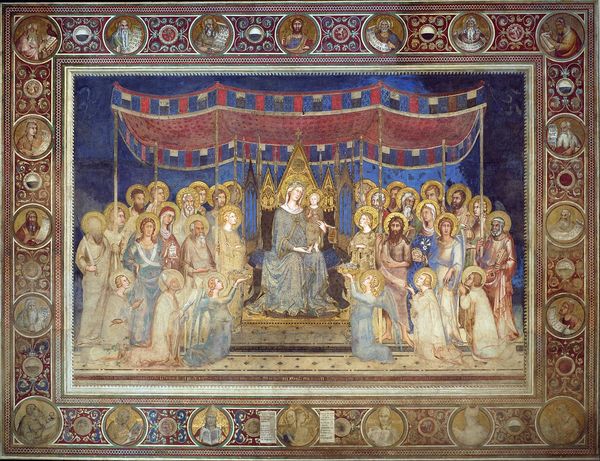
The Trinity and Saints in Paradise, or La Cour Céleste from a volume of "La Cité de Dieu" by St Augustine c. mid 15th century
0:00
0:00
drawing, tempera, painting, print
#
drawing
#
medieval
#
narrative-art
#
tempera
#
painting
# print
#
figuration
#
history-painting
#
international-gothic
#
miniature
Dimensions: 178 × 222 mm
Copyright: Public Domain
Curator: Here we have "The Trinity and Saints in Paradise, or La Cour Céleste" from a volume of St. Augustine’s "La Cité de Dieu," created circa the mid-15th century. What are your immediate thoughts? Editor: An astounding crush of figures, packed tightly together and defined by luminous yet somber shades. It is striking how little space they are given. Almost claustrophobic. Curator: It does lack conventional spatial depth. Consider this not as an earthly panorama, but rather a spiritual gathering. Each figure, carefully delineated, represents a specific saint or blessed individual. These are iconic representations, embodying virtues or narratives relevant to the "City of God." Editor: Yes, but within the visual hierarchy, color choices establish visual relationships. Note how the blues, reds, and golds act as formal anchors, pulling the eye around the entire composition despite the lack of receding space. It’s almost a mosaic in its intricate patterning. Curator: Exactly! Each figure contributes to a wider theological program. The trinity dominates the upper register, underscoring their divine authority, flanked by celestial beings. Notice too how certain symbolic items connect certain figures. What do these common objects convey? Editor: The saints carry varied objects, their attributes… keys, books, swords. Obvious visual cues functioning as identifying labels. In a crowd like this, you need clear signifiers to prevent the whole composition from collapsing into complete chaos. Curator: I would suggest that this piece acts as more than an identikit exercise, however. This is about memory, isn’t it? Through these symbolic items, our awareness of each character is evoked: how they lived, and ultimately, what they represented to the culture which created the image itself. Editor: Fair enough. And certainly the artist’s skillful manipulation of the picture plane draws my attention back into the intricate details, asking us to consider not only who they were, but their placement within such a highly organised space. Curator: The use of tempera, in conjunction with drawing techniques and the function of a miniature in this case creates such richness within its confined space. The painting becomes an artefact and container for cultural history. Editor: I have a stronger appreciation now for this work as more than simply a depiction. Thank you for drawing out its depth.
Comments
No comments
Be the first to comment and join the conversation on the ultimate creative platform.
